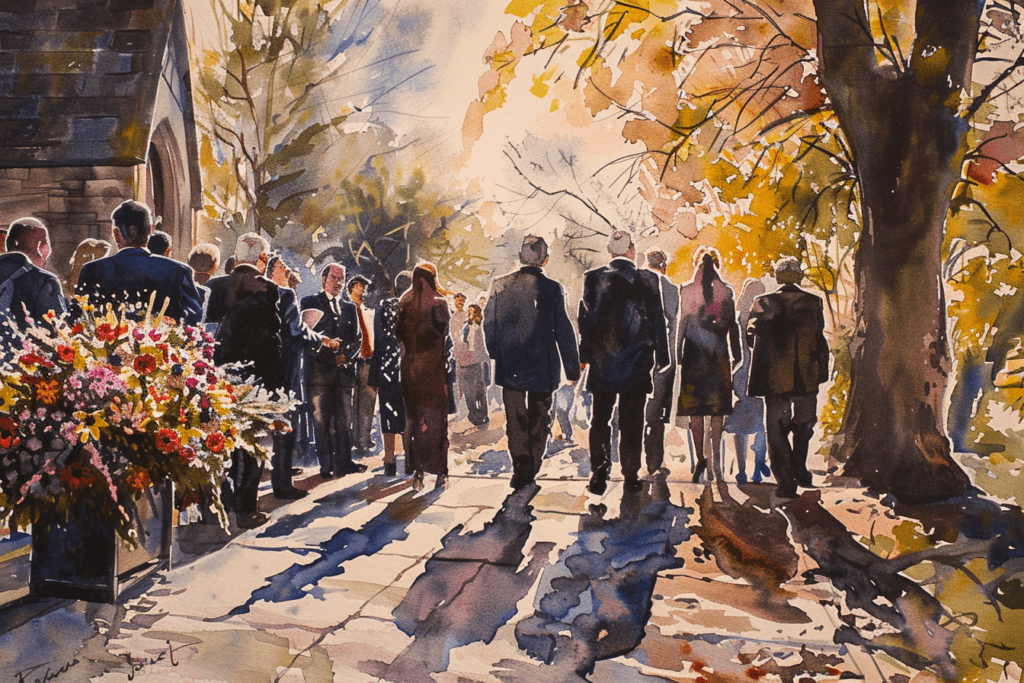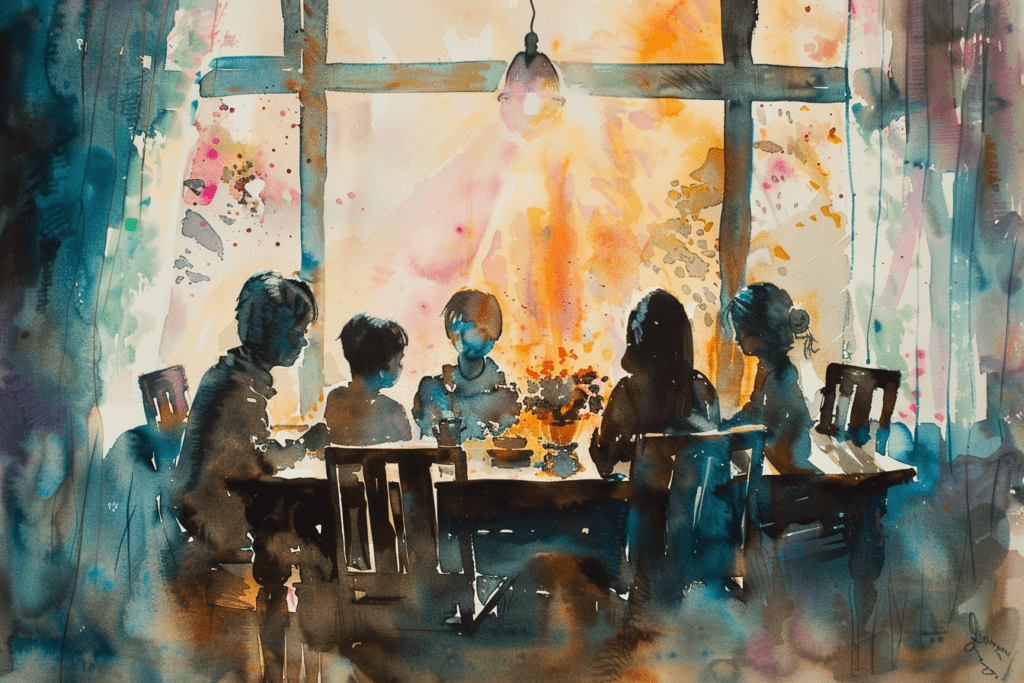
Designing A Funeral Share a Memory Card: Ideas and Inspiration

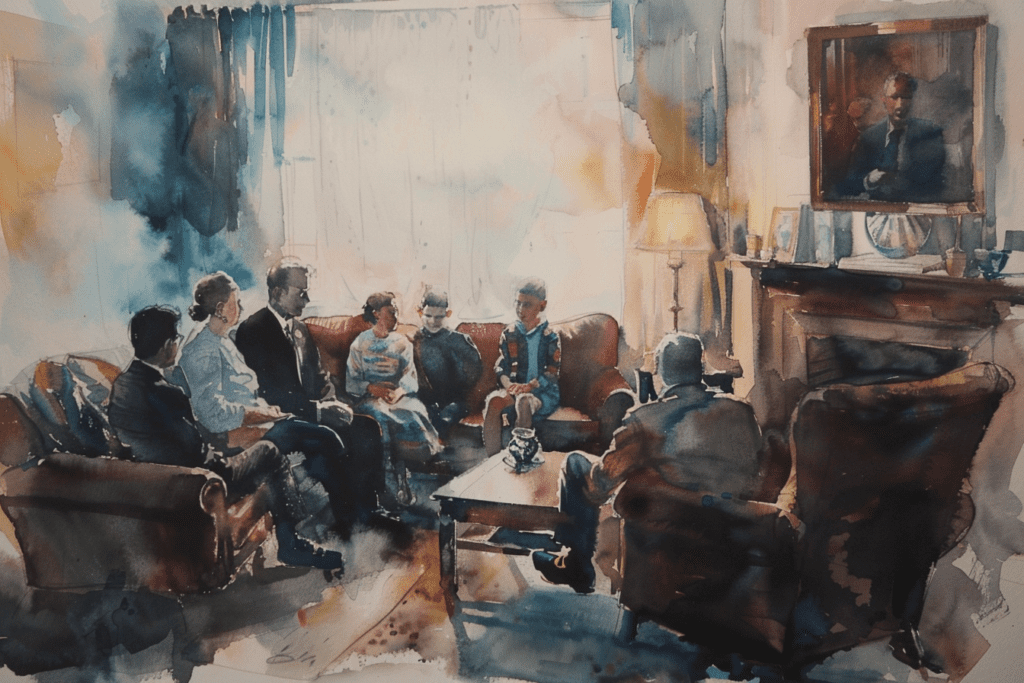

Introduction

The loss of a loved one is a deeply personal and emotional experience. When planning a funeral or memorial service, creating a share a memory card can be a meaningful way to capture and preserve cherished memories.
These cards allow family and friends to share personal anecdotes, reflections, and messages of condolence, creating a lasting tribute to the departed.
This article explores ideas and inspiration for designing a heartfelt and respectful memory card.
For inspiration please see our collection of personalised funeral share a memory cards.
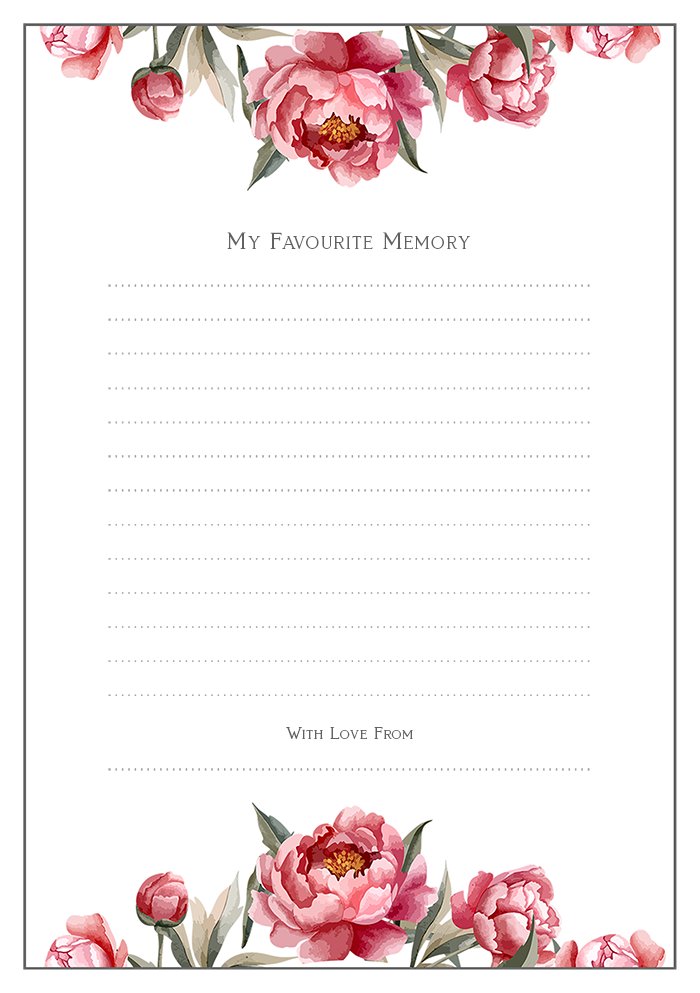
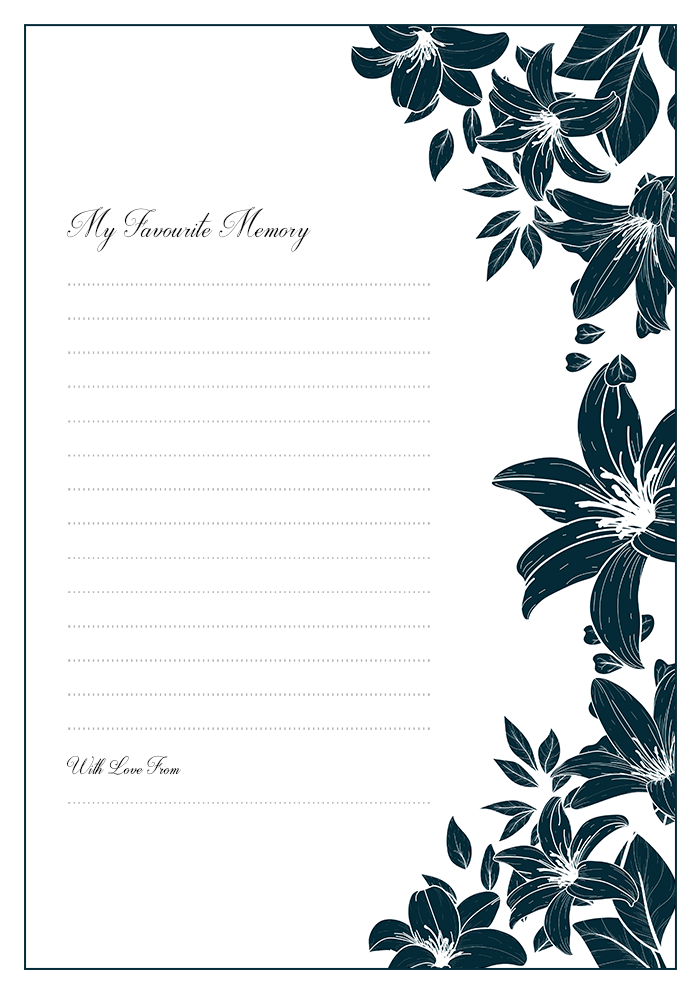
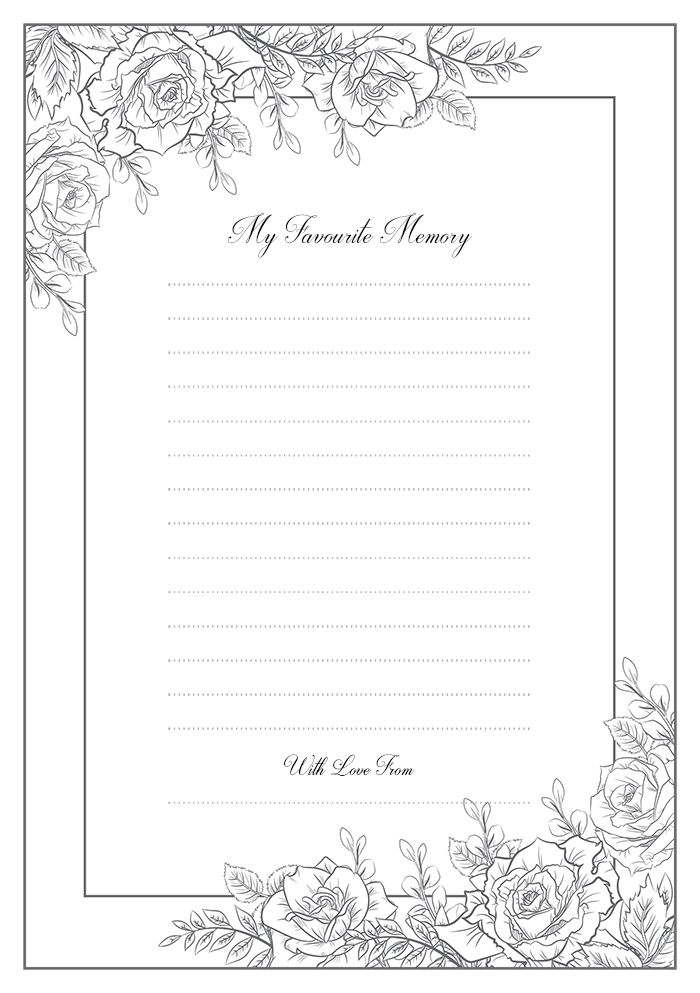
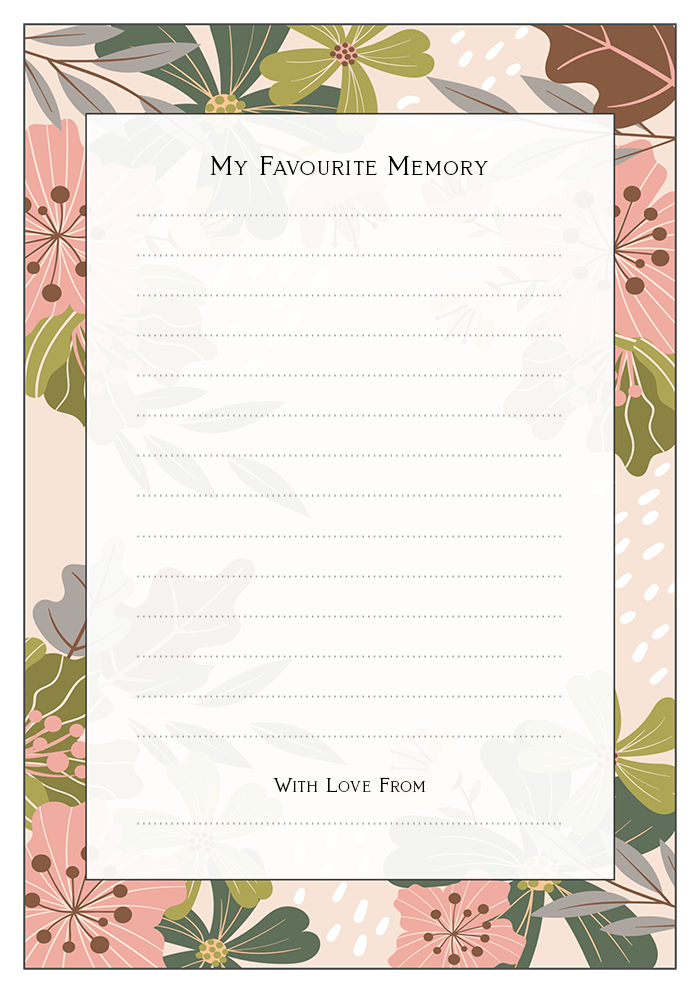
Article Contents

Choosing the Right Design

The design of a share a memory card should reflect the personality and spirit of the departed. Here are some elements to consider:
Theme and Colour Scheme
Selecting a theme that resonates with the deceased’s interests or personality can make the card more personal.
For example, a nature lover might be commemorated with floral or landscape motifs, while a music enthusiast’s card might feature musical notes or instruments.
The colour scheme should also be considered; soft, muted tones like pastels or earth tones often convey a sense of peace and reflection, while bolder colours might be appropriate for someone with a vibrant personality.
Photographs and Imagery
Including photographs can add a personal touch to the memory cards. A cherished photo of the deceased, perhaps a candid shot capturing a joyful moment, can evoke fond memories.
Additionally, images that represent their passions or favourite places can make the card more evocative. Ensure the quality of the photos is high and they are thoughtfully placed to enhance the overall design without overwhelming the text.
Typography and Layout
The font choice and layout should be legible and aesthetically pleasing. Opt for elegant, easy-to-read fonts, and consider using a mix of serif and sans-serif fonts to differentiate headings and body text.
The layout should have enough white space to avoid looking cluttered, and elements should be balanced to guide the reader’s eye naturally through the card.

Crafting the Message

The message on a share a memory card is the heart of the design. It should invite attendees to share their thoughts and memories while providing a comforting presence.
Opening Words
Begin with a warm, inviting introduction. A simple message such as, “We invite you to share a memory of [Name],” sets the tone.
Adding a short, heartfelt sentence about the significance of these memories can also be meaningful. For example, “Your words will help us remember and celebrate the life of [Name], bringing comfort to our hearts.”
Prompts and Guidance
Providing prompts can help attendees think about what to write. Questions like “What is your favourite memory of [Name]?”, “How did [Name] impact your life?”, or “Share a moment that made you smile” can guide their reflections.
These prompts can be subtly included on the card to inspire deeper, more personal responses.
Space for Messages
Ensure there is ample space for attendees to write their memories. This might mean including multiple cards or offering both sides of the card for writing.
Consider the size of the card; a larger card allows for more detailed messages but should still be manageable for guests to hold and write on.

Personal Touches

Adding personal touches to the share a memory card can make them more meaningful and reflective of the deceased’s unique life.
Handwritten Notes
Incorporating a handwritten note from the family can add a personal touch. This note could thank attendees for their presence and participation, adding a layer of sincerity and connection.
Quotes and Poems
Including a favourite quote, poem, or verse of the deceased can personalise the card further. Choose words that reflect their values or bring comfort.
For example, a line from a favourite book or a poem about love and loss can resonate deeply with attendees.
For examples of poems suitable for a funeral please see our article – Poems for a Funeral Order of Service Booklet.
Custom Artwork
If the deceased had a particular artistic flair or passion, consider including custom artwork that reflects this.
For example, if they were a painter, a small reproduction of one of their works could adorn the card. This not only personalises the card but also pays homage to their talents and passions.

Practical Considerations

While the design and content of the memory cards are crucial, practical considerations ensure they are accessible and useful during the service.
Paper Quality and Printing
Choose high-quality paper that is easy to write on. Cardstock is a good option as it is sturdy and durable. The printing should be clear and smudge-proof to maintain legibility over time.
Distribution and Collection
Plan how the cards will be distributed and collected. They can be placed on seats before the service begins or handed out as guests arrive.
Provide pens or pencils to ensure everyone can participate. After the service, designate a box or basket where attendees can place their completed cards.
Preservation of Memories
Think about how these memories will be preserved and shared with the family. The cards can be compiled into a memory book or scanned and digitised for a lasting record.
This way, the family can revisit the kind words and cherished memories in the future.

Conclusion

Designing a funeral share a memory card is a thoughtful way to honour a loved one’s life and provide comfort to grieving family and friends.
By carefully considering the design elements, crafting a heartfelt message, and adding personal touches, these cards can become a cherished memento.
They serve not only as a tribute to the deceased but also as a source of solace and connection for those left behind.
In the midst of grief, these shared memories can offer a ray of light, reminding us of the enduring impact our loved ones have on our lives.





